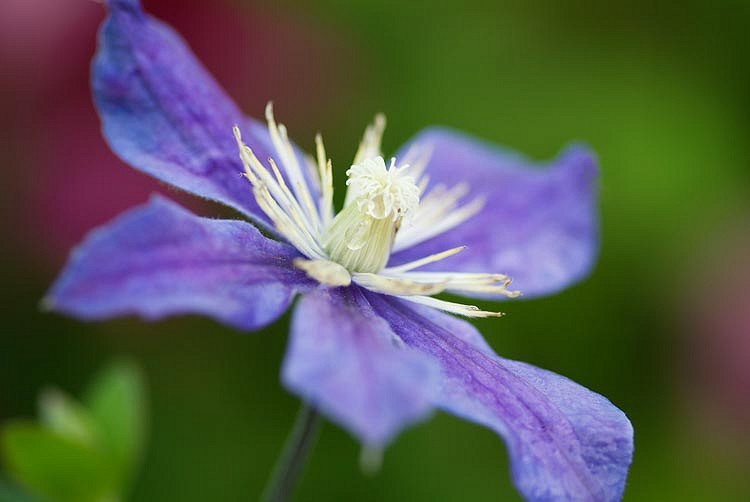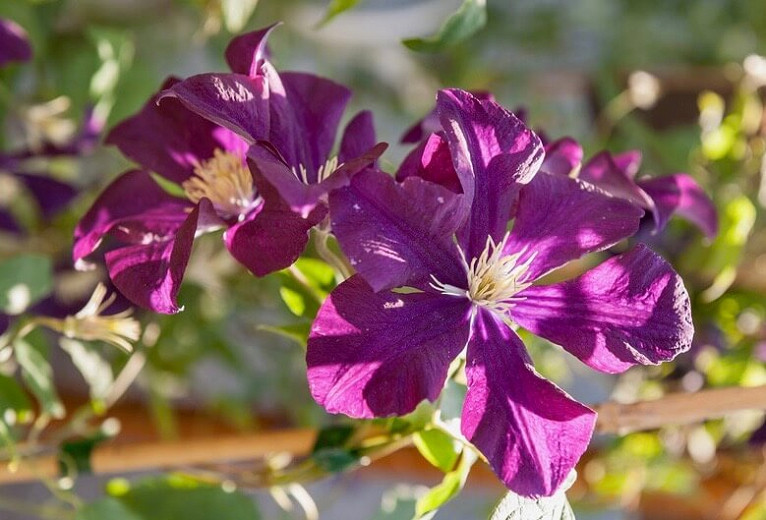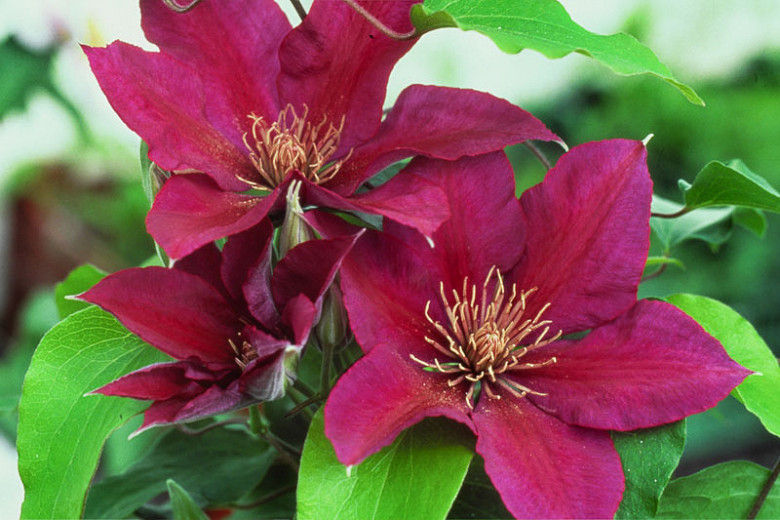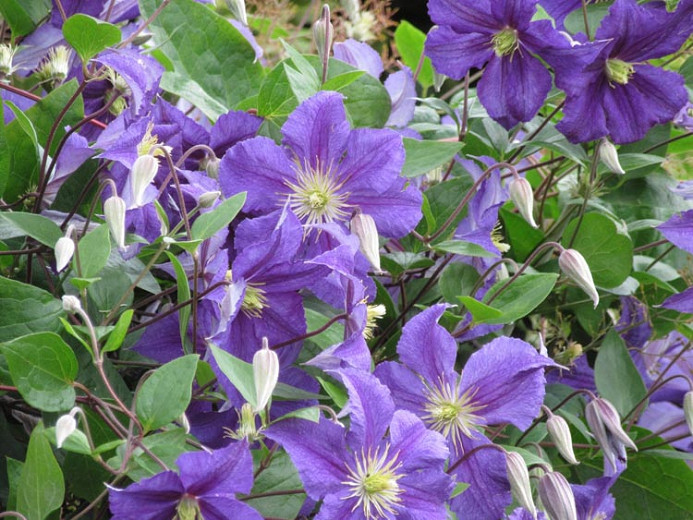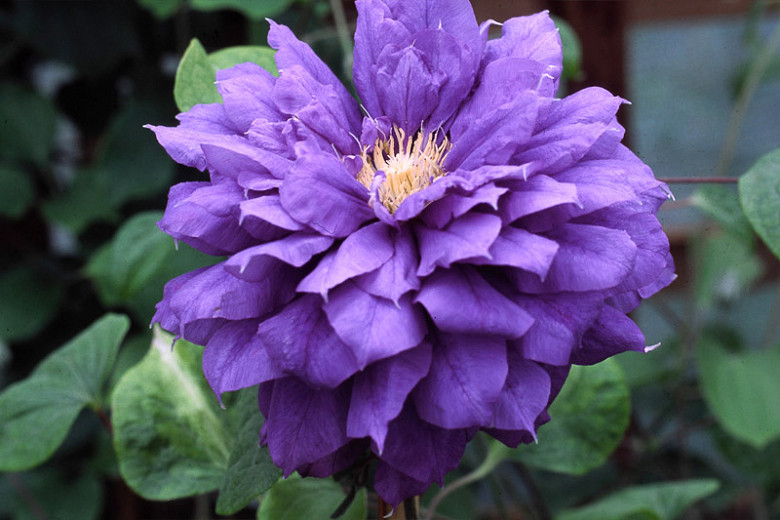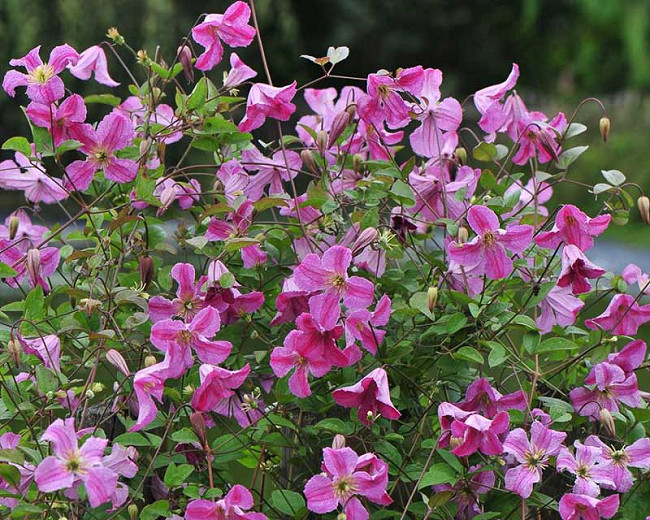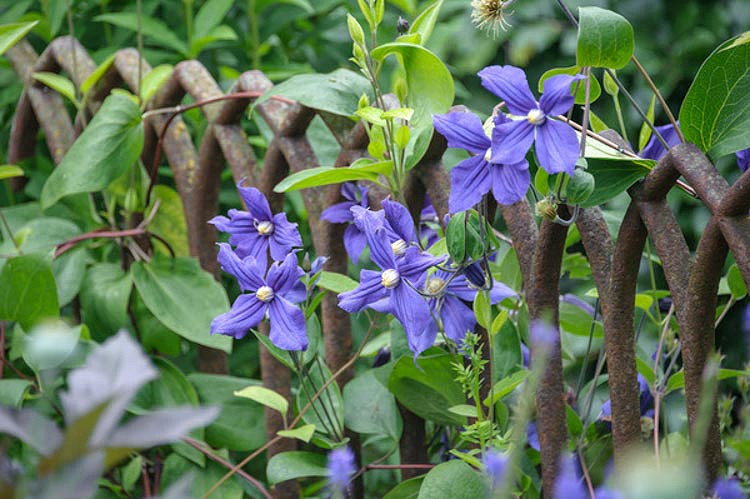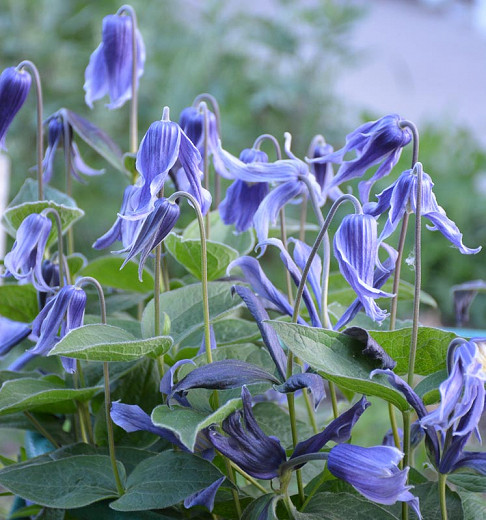Clematis Arabella (Integrifolia Group)
The most popular of all the non-vining clematis, award-winning Clematis 'Arabella' is a semi-herbaceous compact perennial with small, open-faced, deep blue-mauve flowers, 3.5 in. across (9 cm). The buttercup blossoms bear 6 strongly ribbed sepals, gradually curling along the edges and a prominent central tuft of stamens with yellow anthers. They open purple-blue with a reddish cast, then fade towards blue. Blooming profusely from late spring to early fall, this small-flowered clematis is not a vine. Its leaf stalks do not cling and this plant doesn't climb. It sends up stems that are self-supporting at first, and in fact, become woody enough to hold themselves almost erect at their full height. Clematis 'Arabella' is hardy, easy to grow, and no trouble to prune, since it dies back when its season is over. Nominated as the longest-blooming clematis of all, it is excellent for growing through plants in the herbaceous border, draped over walls, or as a flowering ground cover.
- Winner of the prestigious Award of Garden Merit of the Royal Horticultural Society for its noteworthy qualities.
- Thrives in moist, well-drained soils, in full sun. Ideally, Clematis prefer having their 'heads in the sun and their feet in the shade'. Keep the roots cool and shaded by other plants or add a layer of pebbles or flat stones at the base.
- Vigorous, this clematis can quickly grow up to 3-5 ft. long (90-150 cm).
- This Clematis belongs to the third group of Clematis – a group including Clematis which flower in late summer on growth made in that season. They should be pruned in late winter or early spring and require 'hard pruning': simply cut back the stems to a pair of strong buds about 1ft. (30 cm) above ground level before growth begins in early spring.
- Toxic to dogs, toxic to cats, toxic to horses.
Requirements
| Hardiness | 4 – 10 |
|---|---|
| Climate Zones | 1A, 1B, 2A, 2B, 3A, 3B, 4, 5, 6, 7, 8, 9, 10, 11, 14, 15, 16, 17, 18, 19, 20, 21, 22, 23, 24, A1, A2, A3 |
| Plant Type | Perennials |
| Plant Family | Clematis |
| Exposure | Full Sun |
| Season of Interest | Spring (Late)Summer (Early,Mid,Late)Fall |
| Height | 3' – 5' (90cm – 150cm) |
| Spread | 2' – 3' (60cm – 90cm) |
| Spacing | 36″ (90cm) |
| Water Needs | Average |
| Maintenance | Low |
| Soil Type | Chalk, Clay, Loam, Sand |
| Soil pH | Alkaline, Neutral |
| Soil Drainage | Moist but Well-Drained |
| Characteristics | Plant of Merit, Showy |
| Tolerance | Deer, Rabbit |
| Attracts | Butterflies, Hummingbirds |
| Garden Uses | Beds and Borders, Ground Covers, Wall-Side Borders |
| Garden Styles | City and Courtyard, Informal and Cottage, Traditional Garden |
